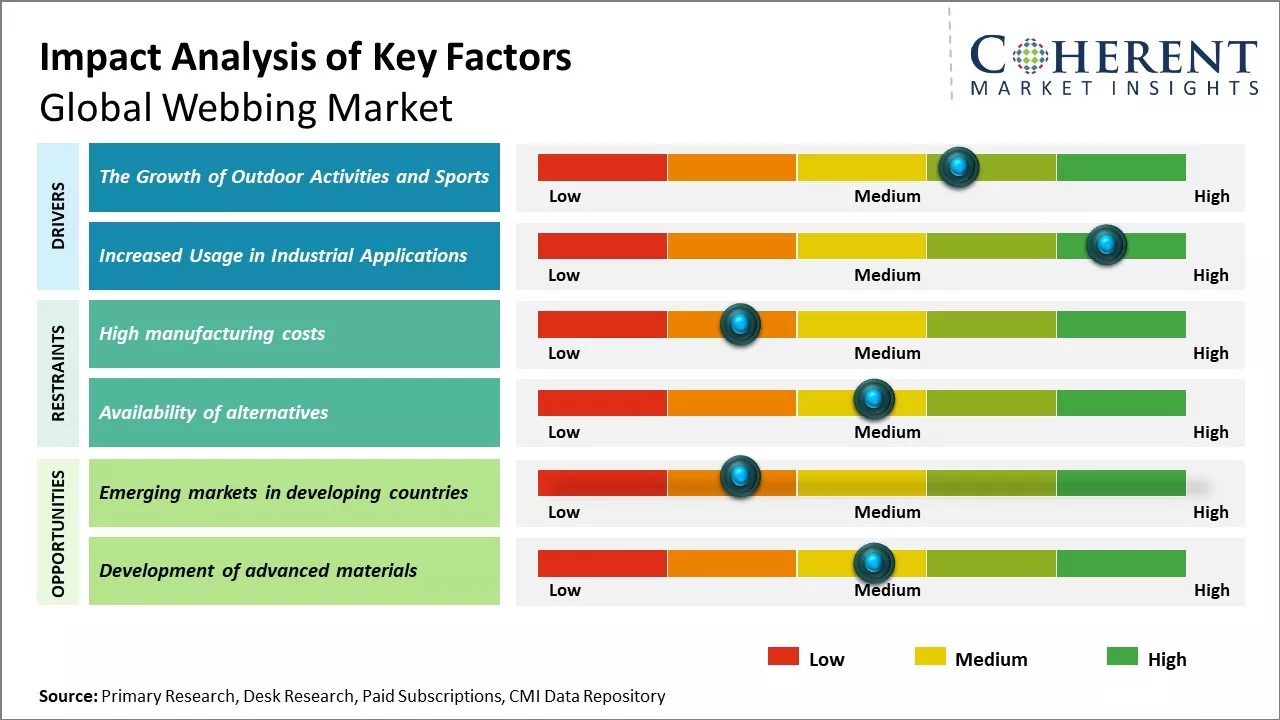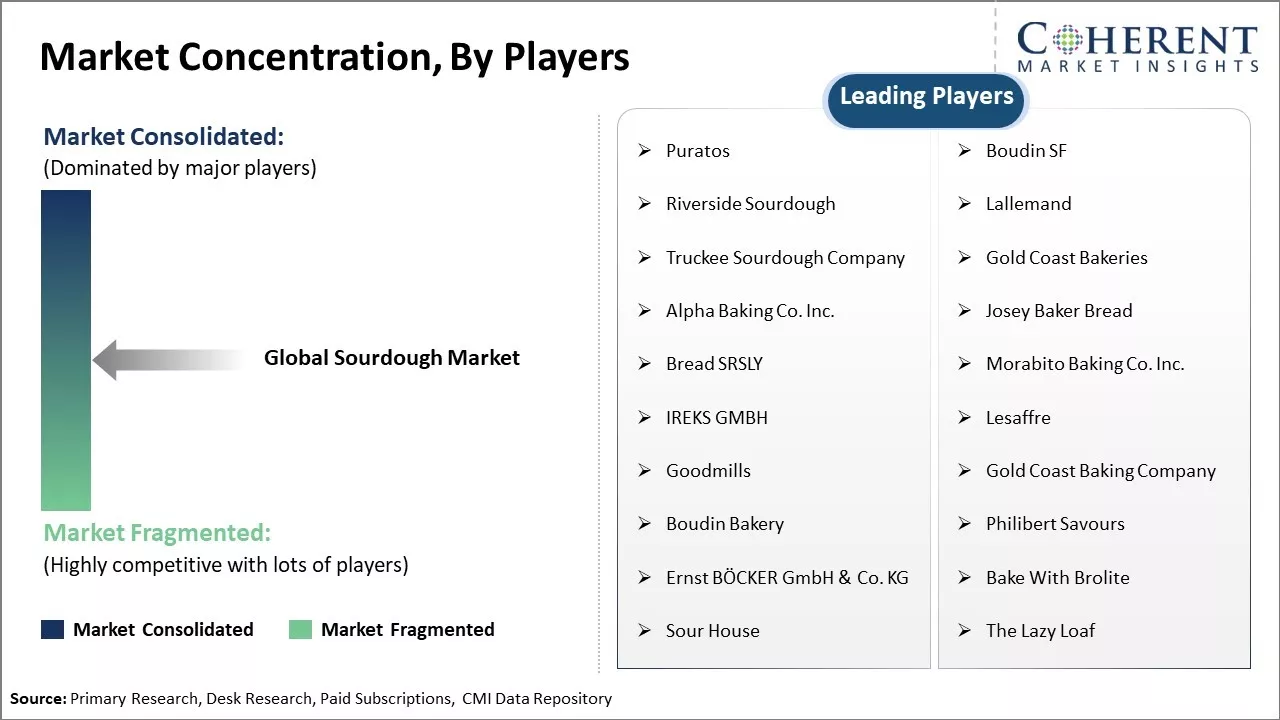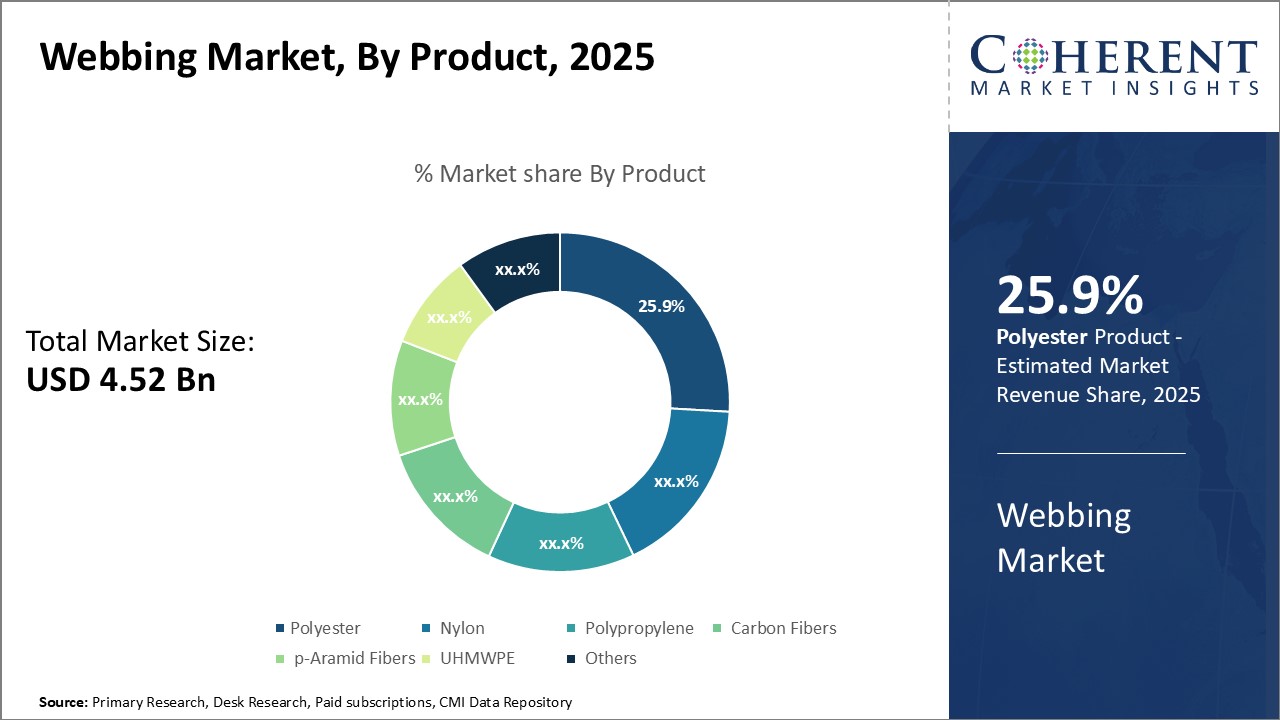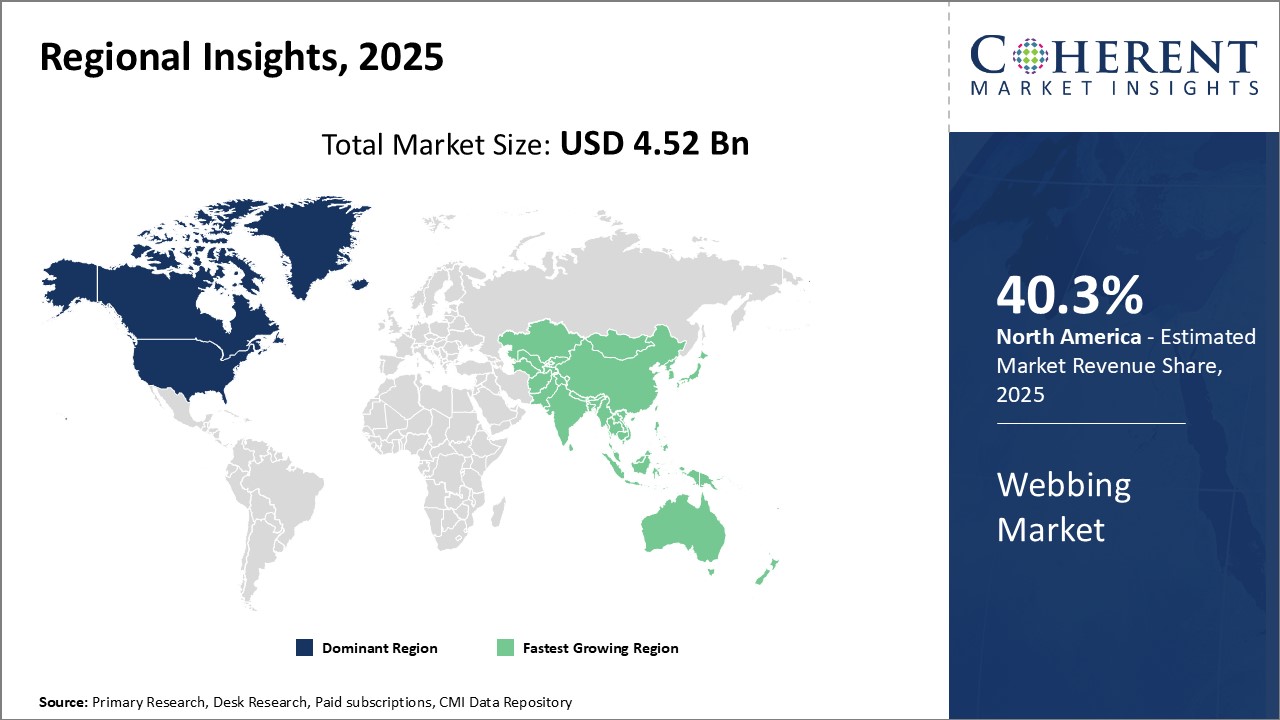The Webbing Market is estimated to be valued at USD 4.52 Bn in 2025 and is expected to reach USD 5.91 Bn by 2032, exhibiting a compound annual growth rate (CAGR) of 3.9% from 2025 to 2032.

Discover market dynamics shaping the industry: Download Free Sample
Widespread adoption of webbing in different industries such as automotive, aerospace, defense, and others is expected to drive the market growth. Additionally, increasing demand for lightweight and durable fastening solutions is expected to propel the growth of the webbing market. Development of advanced material-based webbing with improved tensile strength is anticipated to offer lucrative opportunities for market players. However, the availability of alternative products may hamper the market growth.
The Growth of Outdoor Activities and Sports
The participation in various outdoor activities and adventure sports has seen tremendous growth over the past few decades. More and more people, especially the younger generation, are taking up hiking, camping, rock climbing, bungee jumping and other trekking activities. This has created a strong demand for high-quality sporting goods and accessories. Webbing products play a vital role in equipment used for outdoor sports like rock climbing harnesses, carabiners, and rope lanyards. Leading outdoor equipment manufacturers are introducing innovative webbing designs to cater to the different needs in activities such as mountaineering, caving and canyoning. The growing popularity of eco-tourism and outdoor recreational pursuits has also boosted the sales of webbing which are an essential part of tents, camping equipment, and safety gear. Various national and state park services also widely use woven webbing in attaching signage and fencing.

Get actionable strategies to beat competition: Download Free Sample
Increased Usage in Industrial Applications
Webbings have established themselves as indispensable for a variety applications beyond the sporting goods industry. In construction, webbings are a fundamental component of safety harnesses, lifelines, lanyards and fall protection systems that see extensive employment in activities requiring working at height. Strict worker safety regulations across major economies have raised the bar for compliant personal protective equipment (PPE) at construction sites, driving the need for specialized webbings optimized for cranes, scaffolds, and other equipment. The agriculture sector also relies heavily on reinforced webbing strips for tasks like baling hay and tying bundles. Webbings have also found new adoption in material handling, with woven polyester belts replacing jute and cotton alternatives for conveyor applications that transport heavy items across manufacturing facilities, warehouses and shipping docks. Recent product innovations centred around flame-retardant and mildew-resistant webbings have further opened up possibilities in other industrial verticals such as aerospace and mining.
Key Takeaways from Analyst:
The webbing market has seen steady growth over the past few years driven by increasing participation in outdoor activities and sports. Rising health awareness and people's desire for adventure has boosted demand for webbing which is widely used in products such as bags, belts, shoes, and clothing. The sports goods industry has shown fastest uptake of various webbing materials to offer high performance and durable products especially backpacks and shoes.
Price volatility of raw materials like polyester, cotton, and nylon may pose challenge to participants. Substitutes like twines and cords also provide competition.
Regulations pertaining to production processes and effluent treatment is one factor exercising restraint on market. The European webbing industry has been adopting sustainable practices to comply with stringent norms.
Market Challenges : High manufacturing cost
The high manufacturing cost has been a major factor restraining the growth of the global webbing market. Webbing is widely used in several end-use industries like military, automotive, agriculture, furniture etc where cost plays a vital role. The raw materials used for manufacturing various types of webbings like polyester, nylon, polypropylene, cotton etc have witnessed a significant increase in their prices over the past couple of years.
Market Opportunities: Emerging markets in developing countries
Emerging markets in developing countries hold immense potential for growth in the global webbing market. With rising incomes and growing middle-class populations, local demand is increasing steadily for webbing products across industries like transportation, logistics, packaging and more. Some developing regions that are witnessing major economic and infrastructural development include Southeast Asia, South Asia, Latin America and parts of Africa. Countries such as India, Indonesia, Brazil, Mexico, Nigeria and others have large consumer bases with growing disposable incomes.

Discover high revenue pocket segments and roadmap to it: Download Free Sample
Insights, by product : excellent strength-to-weight ratio and durability
In terms of Product, the Polyester segment is estimated to hold 25.9% share of the webbing market in 2025, owing to its excellent strength-to-weight ratio and durability. Polyester webbing is extremely versatile and can withstand harsh environments without degradation. It exhibits high tensile strength even after prolonged usage and exposure to UV rays, chemicals, moisture and abrasion. Polyester webbing also offers consistency in quality as it is manufactured using precise production processes. The light weight of polyester webbing allows for comfortable carrying without fatigue. Its resistance to stretching prevents damage or tear even under heavy loads. Leading outdoor equipment manufacturers prefer polyester for applications requiring lightweight yet rugged materials like tents, luggage and snowboards. Polyester webbing is easy to clean and maintains its appearance for long-lasting use. It is UV stabilized to prevent fading and breakage from sun exposure. The wide availability and mass production of polyester have led to competitive pricing. It can be customized with different finishes, colors and thicknesses as per application needs. Excellent physical properties and reliability coupled with affordability have made polyester webbing the top choice among various industry players. Its dominant market position is further strengthened by robust research into new high-performance polyester grades.
Insights, by application : Dominating the Road
In terms of Application, the automotive sector is estimated to hold 41.7% share of the webbing market in 2025, owing to stringent safety and quality standards. Webbing plays a critical role in automotive safety components like seat belts, airbags and child restraint systems. Automakers require webbing with high durability to endure frequent use over vehicle lifetime without fraying or breakage. They prefer materials like polyester, nylon and polypropylene with uniform tensile strength. Webbing must be abrasion resistant as seat belts constantly rub against vehicle interiors and hardware. Its colour-fastness is important to prevent aesthetic damage from ultraviolet light. Governments worldwide have mandated the use of several airbags and seat belts in all vehicle types to meet safety regulations. This fuels considerable and consistent demand for webbing from automotive OEMs and suppliers. The rapid growth of the global automotive industry also drives webbing consumption higher. Additionally, rising vehicle ownership in developing nations amplifies opportunities for webbing manufacturers in the lucrative automotive aftermarket. Strict compliance with industry standards and certifications is mandatory for webbing used in automotive safety applications. Only reputed webbing makers with robust quality control can meet the rigorous product performance criteria set by law. This ensures the automotive sector remains a profitable and dependable market for webbing providers.

Need a Different Region or Segment? Download Free Sample
North America has established itself as the dominant region in the global webbing market over the past few decades and is estimated to account for 40.3% share in 2025. Countries like the U.S. and Canada have strong industrial capabilities and presence of numerous global as well as domestic players in this industry. The region is home to some of the largest manufacturers and suppliers of webbing for various applications across diverse industries such as automotive, aerospace, defense, apparel and more. The size and scale of operations of companies in North America enables them to cater to large domestic as well as international demands.
The Asia Pacific region has emerged as the fastest growing market for webbing globally in recent years. Despite competition from developed regions, the availability of raw materials, developing manufacturing infrastructure and thriving end-use industries have boosted the webbing market in Asia Pacific. Countries like China, India, Vietnam, and Indonesia are witnessing tremendous growth in industrialization which has also augmented the demands for webbing. Rising wages and manufacturing costs in traditional Asian hubs are driving production to newer destinations in Southeast Asia, providing opportunities for manufacturing companies in those countries. In addition, the massive population in Asia Pacific leads to a burgeoning demand for consumer products like footwear, apparel, and automobiles where webbing is a significant component. The region also has a conducive trade environment for exports as well as imports of webbing and raw materials. Significant investments by major domestic as well as international players have added to the attractive business case for webbing industry in Asia Pacific. This has consolidated Asia Pacific's prominence as the fastest developing market for webbing worldwide.
Webbing Market Report Coverage
| Report Coverage | Details | ||
|---|---|---|---|
| Base Year: | 2024 | Market Size in 2025: | USD 4.52 Bn |
| Historical Data for: | 2020 To 2024 | Forecast Period: | 2025 To 2032 |
| Forecast Period 2025 to 2032 CAGR: | 3.9% | 2032 Value Projection: | USD 5.91 Bn |
| Geographies covered: |
|
||
| Segments covered: |
|
||
| Companies covered: |
JP Fibres, American Cord & Webbing Co., Inc., E. Oppermann GmbH, Belt-tech, Narrowtex Australia Pty Ltd, Jiangsu Daxin Webbing Co., Ltd., National Webbing Products., Murdock Webbing Company, Inc., Tennessee Webbing Products, Bally Ribbon Mills, Marling Leek, Autoliv, Eurosandow, Granat Industries, Inc, Sturges Manufacturing Co. Inc., Chung Ting, and BioThane |
||
| Growth Drivers: |
|
||
| Restraints & Challenges: |
|
||
Uncover macros and micros vetted on 75+ parameters: Get instant access to report
*Definition: The Webbing Market refers to the industry that produces and distributes various types of webbing materials. Webbing is a strong, flat fabric made from synthetic fibers like nylon, polyester, or polypropylene. It is commonly used in a wide range of applications.
Share
Share
About Author
Vidyesh Swar is a seasoned Consultant with a diverse background in market research and business consulting. With over 6 years of experience, Vidyesh has established a strong reputation for his proficiency in market estimations, supplier landscape analysis, and market share assessments for tailored research solution. Using his deep industry knowledge and analytical skills, he provides valuable insights and strategic recommendations, enabling clients to make informed decisions and navigate complex business landscapes.
Missing comfort of reading report in your local language? Find your preferred language :
Transform your Strategy with Exclusive Trending Reports :
Frequently Asked Questions
Joining thousands of companies around the world committed to making the Excellent Business Solutions.
View All Our Clients